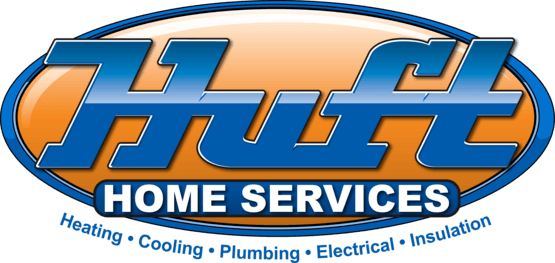Your HVAC system is what creates a comfortable indoor environment in your home by taking care of heating and cooling needs. As a result, the HVAC system is directly responsible for the quality of air you receive in your home. Indoor air is usually more polluted than outdoor air because it contains dust, cleaning products, bacteria, and pet dander.
A home environment with low indoor air quality can cause respiratory conditions or worsen allergies. In addition, if the air is moist, your home can easily foster mold growth and increase your chances of becoming ill. Finding ways to improve your air quality is crucial for a healthy living environment.
How an HVAC System Impacts the Quality of Your Indoor Air
Most people will spend a large portion of their day indoors, making it essential to have healthy air in the home. Your HVAC can affect your indoor air quality positively or negatively depending on its efficiency. It eliminates pollutants and odors from the outside air it brings in by sending it through a filtration system for cleaning. The ductwork and filters prevent pests and insects from entering the house and producing waste. The HVAC system also regulates indoor humidity and eliminates the excess moisture in the air to avoid the build-up of bacteria, mildew, and mold. Finally, the fan in the HVAC unit provides proper airflow around the home, providing the house with adequate ventilation.
Solutions to Improve Indoor Air Quality
Here are some solutions to consider when improving indoor air quality to make your home cleaner and healthier.
Improve Ventilation
A well-designed ventilation system is crucial to creating a balance of gasses, ensuring the air you inhale does not contain excess carbon dioxide. Most cooling and heating systems cannot mechanically draw fresh air into the home. The outdoor ventilation rate can be increased by opening your doors and windows or operating any attic and window fans.
Ventilation from an outdoor source with adequate shading will help to control indoor temperatures. When natural ventilation is used correctly, it reduces indoor air pollutants and moderates the temperature when the air conditioning system is not running. It also helps to remove odors and contaminants from the occupied spaces, thus improving the overall quality of the indoor air.
Use Efficient Air Filters
Your HVAC system air filter is the first line of defense, protecting you against poor air quality in your home. Standard HVAC systems will circulate your home’s entire air volume through the air filters multiple times a day. An effective air filter will remove airborne particulates like dust and pollen. A dirty air filter will reduce air quality since it acts as a reservoir that traps airborne contaminants and circulates them back into the air supply.
When too much dirt accumulates on the air filter, it clogs, creating an airflow blockade. The reduced airflow causes a strain on the system, leading to overheating and premature shutdown. Reduced airflow will affect your health and can be dangerous to people with respiratory conditions like asthma. Regularly change your air filters to prevent severe problems and maintain quality indoor air.
Clean the Vents and Ductwork
In most homes, duct cleaning is often neglected during routine maintenance. With time, the ducts and vents fill with dust and other contaminants, impacting indoor air quality. When the obstructions become more extensive, air flow is restricted into the home, which is a cause for significant concern. Your HVAC could be producing quality air, but none of it is delivered inside the house.
Most HVAC companies provide duct cleaning as a maintenance service so that your system remains efficient and continues to provide clean air. Regularly checking your ducts and vents will help you identify and fix any problems to ensure quality indoor air in the home.
Use Air Purifiers
A home air purifier is an excellent solution if you have family members with allergies caused by dust and pollen. The purifier connects with the ducts of the HVAC system, allowing it to remove impurities from the air circulated by the blower fan of either the air conditioner or the furnace. An air purifier will decrease allergies, improve lung health, and reduce the spread of diseases among members of your household.
The appliance market has many products that help to eradicate allergens in a home. It is advisable to purchase a single system offering efficient allergen removal to save on cost rather than buying several individual units. Some advanced air purifiers use UV light to kill dangerous microbial particles in the air when they pass through the filter. The purifier’s effectiveness will determine the air quality you receive in your home.
Monitor the Carbon Monoxide Levels
Carbon monoxide is a colorless, odorless gas that is toxic when inhaled. It is produced when fossil fuels such as gas fail to burn completely. Incomplete combustion may occur due to inadequate maintenance or improperly fitted heating appliances such as gas fires and boilers. Dangerous concentrations of carbon monoxide may fill the home, especially if the chimney or flue is blocked.
A carbon monoxide alarm is the best defense to protect your household from dangerous toxins. It is also essential to regularly test the detectors to ensure they are still functional in order to keep air quality optimum.
Reduce Humidity
In a residential environment, humidity accumulates quickly due to bathing, cooking, and breathing. Indoor humidity should be at levels between 30 to 60 percent. High humidity promotes the breeding of toxic bacteria and mold. Maintaining good indoor air quality in a home with high moisture requires considerable effort. Installing a dehumidifier will help manage indoor air quality and prevent health issues.
For a home with humidity above the recommended level, a whole-house dehumidifier should be installed inside the HVAC ductwork to maintain quality indoor air. The dehumidifier continuously treats all the indoor air as it circulates throughout the home. A humidistat controls it to ensure efficiency.
Control Sources of Pollution
The most efficient way of improving indoor air quality is by eliminating the sources of pollution and reducing their emissions. Identify the areas in your home that are potential causes of air pollution. Even small changes in the home, like cleaning solvents or a new pet, can have a significant impact on your indoor air quality. Prevent outdoor pollutants from entering the house by closing the windows and doors during windy days. Products like air fresheners and cleaning supplies emit volatile organic compounds into the air, which cause adverse health effects and should be removed from the home. You should constantly monitor your home to narrow down the sources of these pollutants to ensure your home maintains good indoor air quality.
Call a Professional
Addressing the above causes of poor air quality will lead to significant improvements in the overall health of your home environment and create a comfortable living space. You can also call on the services of a professional technician to help improve your home’s indoor air quality. Huft Home Services offers high-quality heating and cooling services, and our experienced technicians are available to install a wide range of indoor air quality products, including dehumidifiers, UV lights, and air purifiers. Contact Huft Home Services for more information.




